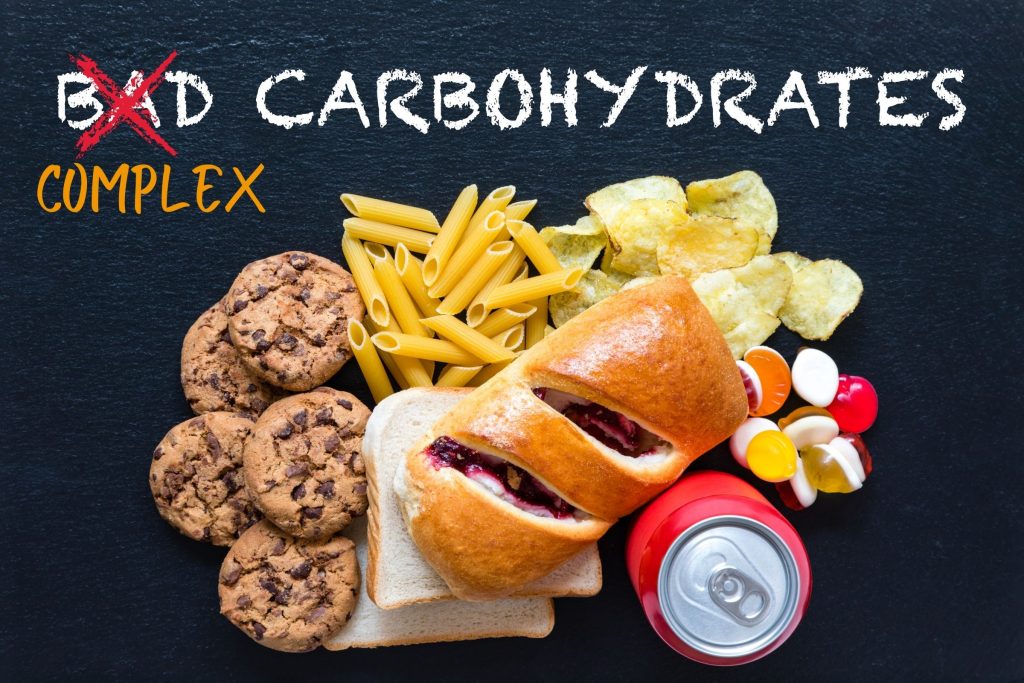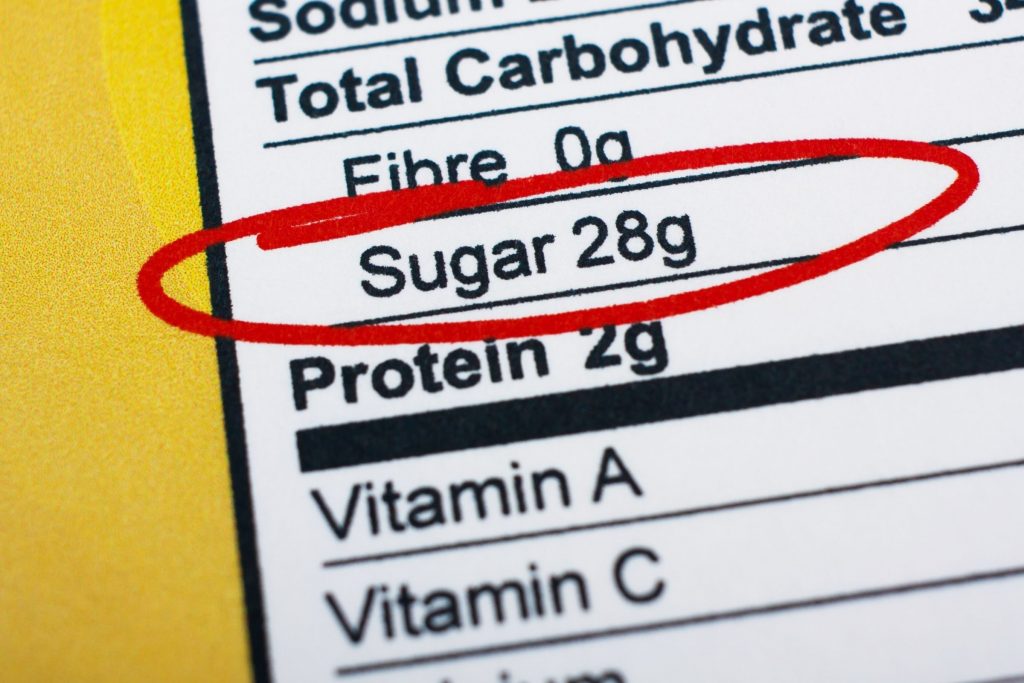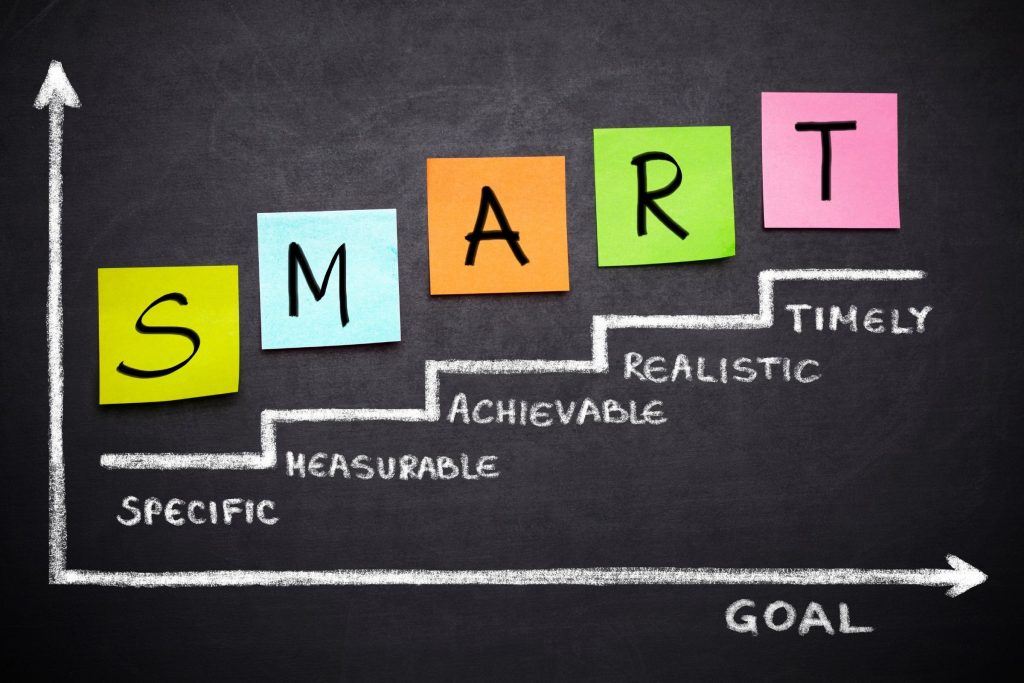Carbohydrates or “carbs” seem to be the topic of many health blogs and diet discussions today. When we meet with patients for diabetes education, one of the first questions we get is “How much carbohydrate should I be eating?” So, what are carbs and why are they such a hot topic? Let’s start back at the basics.
What Are Carbohydrates (Carbs)?
All food is made up of three main nutrients: carbohydrates, protein, & fats. We need all three nutrients in varying amounts to remain healthy. Carbs are used as the body’s primary source of energy. They are found naturally in certain foods like grains, dairy, fruits, and starchy vegetables. When we eat food and drinks that contain carbs, our body breaks down the carbs into glucose, and our blood sugar level rises. In people without diabetes, the body is able to keep blood sugar from rising too high. In people with diabetes, this process does not work as intended. If you have diabetes, then choosing the right types of carbohydrates and carb counting can help you better manage your blood glucose.

Healthy Carbs (“Good” Carbs)
When it comes to healthy carbs, try to choose more foods in their whole form. Good examples include starchy vegetables (potatoes, winter squash, corn), whole grains (brown rice, whole wheat pasta, oatmeal, quinoa), legumes (beans, lentils, peas) & fruit (apples, berries, melon). These choices of carbohydrates provide fiber along with essential vitamins & minerals. Fiber can help you better manage your blood sugars, decreases your risk of heart disease, and can help you achieve a healthy weight.

Refined Carbohydrates & Added Sugars (“Bad” Carbs)
Refined carbohydrates are foods that have been stripped of many important nutrients, including fiber. Examples include white bread, white rice, & fruit juice. Because these foods have had fiber removed, they will cause a greater blood sugar spike. Added sugars work in the same way. You may find added sugar in foods like canned fruit, yogurt, cereals, & sweetened beverages. Common examples of added sugar include table sugar, honey, corn syrup, & agave nectar. Reading food labels will be important to determine the amount of added sugar in foods you commonly consume.
Patients often ask which carbohydrates they should be avoiding. Our belief is there is no such thing as an “off limits” or “bad carb.” Yes, some choices are healthier than others, but that doesn’t mean you need to eliminate certain carbohydrates all together from your meal plan. Instead I suggest choosing mostly healthy carbs, and limiting your portions of refined carbohydrates and foods with added sugars.

How to Count Carbs
Basic carb counting includes counting the number of grams of total carbohydrate in a meal. Carb counting can be helpful when trying to plan your meals. If you take insulin, you can use carb counting to help determine how much insulin to take. When you have the right balance of carbohydrate and insulin, your blood sugar level is more likely to be within target range. How much carbohydrate a person needs depends on several things, like body size and activity level. In order to find out how many carbs you should be eating, schedule an appointment with your registered dietitian (RD) or certified diabetes care and education specialist/certified diabetes educator (CDCES/CDE).

Food Labels
You can find out how much carbohydrate a food has by reading food labels. If a food doesn’t have a food label (like a piece of fruit) you can use nutrition apps or websites like Calorie King to help you calculate.
Start by looking at Serving Size
If you eat more than 1 serving, you will need to account for the additional nutrients. For example, if you eat two servings, you will need to multiply the grams of total carbohydrate by two.

When you count carbs, always use grams of Total Carbohydrate.
Total carbohydrate includes all types of carbs: starch, fiber, and sugar (natural & added). Aim for foods high in fiber and with little to no added sugar.
Healthy Plate

If you’re not ready to start carb counting but would like to eat healthy & balanced, I would recommend starting with the Diabetes Plate Method. The goal is to eat a variety of healthy foods in the right portion sizes.
Start by grabbing a 9-inch plate and filling 50% of your plate with non-starchy vegetables (salad greens, broccoli, carrots, green beans). Next, fill 25% of your plate with healthy carbs(whole grains, potatoes, corn, peas, beans, fruit). The last 25% section should be filled with lean protein (chicken breast, salmon, lean beef, tofu). Finally, choose water or another no calorie beverage to drink (unsweetened tea, unsweetened coffee, unsweetened sparkling water).
Learn more about carb counting through the American Diabetes Association or National Institute of Diabetes and Digestive and Kidney Diseases. Want to know how many carbs are in some of your favorite foods? Visit the Centers for Disease Control (CDC) website.

Goal Setting
Self-managing diabetes can be challenging at times. Still, you can achieve your goals and live a long healthy life by taking small steps towards your goals each and every day. Get started by setting SMART Goals. SMART stands for: specific, measurable, achievable/attainable, realistic and timebound.
Specific
Start by being specific with what you want to accomplish. Ask yourself: What do you hope to accomplish? Who needs to be involved? When do you want to do this? Why are you wanting to do this?
Measurable
To determine if your goal is measurable, ask yourself these questions: How much will you do? How long will you do this for? How often will you do this? Quantifying your goal will make it easier to track progress.
Achievable/Attainable
Goals should be within reach, not too easy but also not too difficult. Planning and accomplishing small goals one step at a time will help you experience achievement and build momentum. Ask yourself: How can I achieve this goal?
Realistic
Set realistic goals and be realistic about change. Ask yourself: Is this goal realistic and within my reach? Am I able to commit to achieving this goal?
Timebound
Set realistic timelines. If a goal is not time constrained or have a deadline, there is less urgency and less motivation to achieve the goal. Ask yourself: Dose my goal have a deadline? When do I hope to accomplish this goal?
SMART Goal Examples:
- I will eat a piece of fruit instead of ice cream after dinner on 4 days each week for the next month.
- I will walk for 15 minutes during my lunch break on 5 days each week for the next month.
- I will choose unsweetened tea instead of soda when dining out a restaurant for the next month.
- I will check my blood sugar twice daily, fasting and 2 hours after supper, for the next month and store in my logbook.
- I will make an appointment with my ophthalmologist for a dilated eye exam by the end of this month and yearly thereafter to prevent serious vision problems.
So, what specifically are you hoping to accomplish this month?
Diabetes Education in Newton KS
If you have questions or would like to learn more about managing diabetes through our Diabetes Education program, contact our certified diabetes educators below:
Phone: (316) 804-6147
Email: elizabeth.wilson@mynmchealth.org
Your health is our focus.



